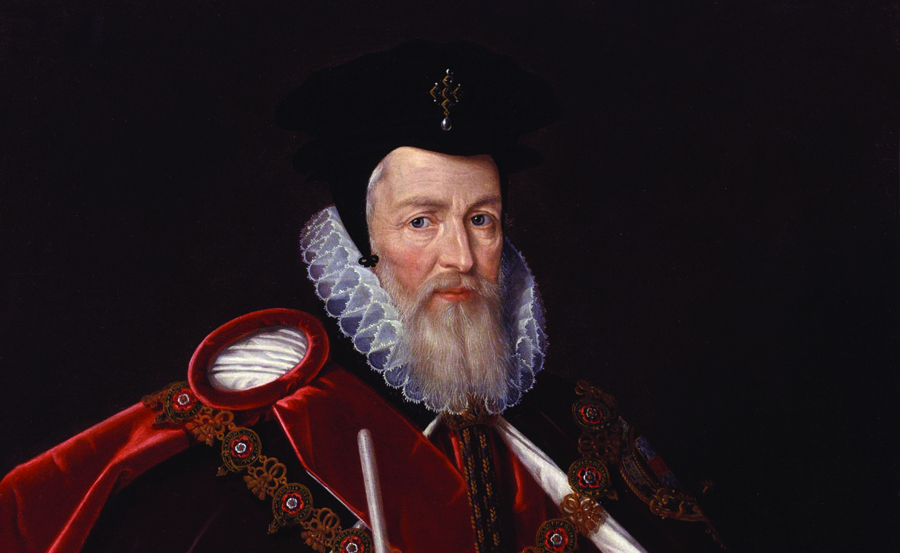House where William Cecil courted slavery
Wimbledon homes are a prized asset, especially during the Championships, when, pre-Covid – players rent some of them. But one of the mansions near Centre Court was where the Transatlantic Slave Trade was devised and planned. Wimbledon historian PETER WALKER highlights Wimbledon’s links with the evil trade.
As the 2021 Tennis Wimbledon Championships began on June 28, those participating and watching would have been surprised about one house and what its walls once witnessed.
Overlooking the All England Lawn Tennis courts at Church Road, SW19 is Wimbledon’s oldest and most expensive house – sold for £20million in 2012.
It is where the Britain’s participation in the slave trade was planned and funded.

The person who initiated Britain’s role in the slave trade and arranged to fund the first slave voyages to Africa and the Caribbean was its then owner William Cecil, Secretary of State and Lord Treasurer to Queen Elizabeth 1.
The house where Cecil lived, is The Old Rectory, 82 Church Road SW19 5AA.
It was Cecil who advised the Queen to help plan and finance the voyages of John Hawkins, Britain’s first slave trader, in 1562.
John Hawkins, with financial backing from Cecil and Elizabeth I, made his first voyage, initiating Britain’s participation in the slave trade in 1562-1563.
He sailed down the West African coast capturing about 300 slaves.
He then crossed the Atlantic and sold his captives in the West Indies, and made a handsome profit for his investors.
Cecil’s family, as well as Elizabeth 1, benefited greatly from their participation in the slave trade.

William Cecil’s son, Thomas, later Earl of Exeter, enriched by the trade, decided to build a grand new Wimbledon manor house in 1588 which was to became known as Wimbledon Palace.
The grounds of the “Palace” covered part of the land now owned by the AELTC. The Palace was demolished in 1717, leaving only the Old Rectory as a potent legacy in Wimbledon of Britain’s role in the slave trade.
Following Hawkins initial trip, the Queen – seeing the profits to be made from slavery – sponsored Hawkins by lending him her very own 700 tonne vessel, Jesus of Lubeck, for further trips in 1564.

Hawkins sailed from Plymouth specifically for the purpose of capturing slaves on the west African coast.
Hawkins made further slave trading voyages in 1567-1569. His slave voyages were semi-official, financed and organised by William Cecil from his Wimbledon home and with royal support.
Hawkins chartered Royal Navy ships and sailed under the royal standard.
On his return in 1565 from his second profitable slave voyage, Elizabeth granted Hawkins a coat of arms in recognition of his work.
This coat of arms openly celebrates the role Hawkins, backed by Cecil and the Queen, played in the slave trade by including in it in the words used at the time: “a demi-Moor bound and captive” on the crest of his coat of arms.
John Hawkins was knighted in 1588 by Elizabeth 1 and in 1599 the Cecils entertained Queen Elizabeth I at Wimbledon Palace for three days.
The trade in exploited lives continues to this day, from that distant spark.
What has happened to all the money made from human misery since then would take a lot longer to relate.
Main Pic: The Old Rectory
Everyone at the South London Press thanks you for your continued support.
Former Housing Secretary Robert Jenrick has encouraged everyone in the country who can afford to do so to buy a newspaper, and told the Downing Street press briefing:
“A FREE COUNTRY NEEDS A FREE PRESS, AND THE NEWSPAPERS OF OUR COUNTRY ARE UNDER SIGNIFICANT FINANCIAL PRESSURE”
If you can afford to do so, we would be so grateful if you can make a donation which will allow us to continue to bring stories to you, both in print and online. Or please make cheques payable to “MSI Media Limited” and send by post to South London Press, Unit 112, 160 Bromley Road, Catford, London SE6 2NZ







